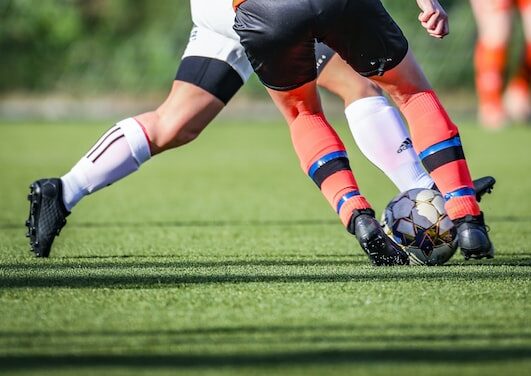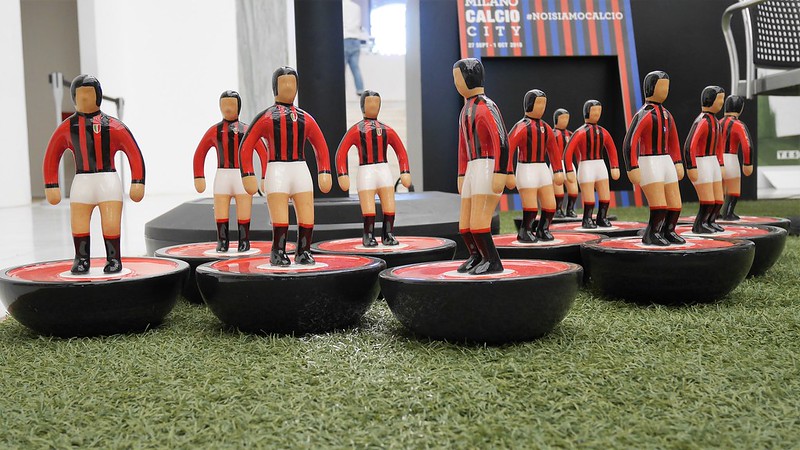
The last miracle in Italian football occurred on a Sunday in May 1991, when U.C. Sampdoria won their first – and so far only – Serie A title, pipping defending champions AC Milan to the Scudetto. Thirty-one years later, Milan conjured a miracle of their own on a Sunday evening in May in the northern Italian city of Reggio Emilia. Playing U.S. Sassuolo Calcio, the Rossoneri sealed their 19th Italian championship with a comprehensive 3-0 win.
A Scudetto win for A.C. Milan would not normally constitute a ‘miracle’.
But this one would.
Milan’s first-choice playing 11 this season – the players most used throughout the 2021/22 season – has an average age of 24.36. The 11 usually featured only 2 players over the age of 25 – goalkeeper Mike Maignan and centre-forward Olivier Giroud.
The average age of Milan’s playing 11 is the second lowest among the 20 clubs that finished in the top four places this season in Europe’s ‘Big Five’ leagues – the English Premier League, the Spanish La Liga, the German Bundesliga, the French Ligue 1 and Italy’s Serie A.
Among the clubs that finished in the top-four places, only Germany’s Bayer Leverkusen has a lower average age for its first-choice playing eleven: 24.18. French club A.S. Monaco rounds up the top 3 with an average playing 11 age of 24.81.
| CLUB NAME | AVG AGE OF FIRST XI* |
| Bayern Leverkusen | 24.18 |
| AC Milan | 24.36 |
| AS Monaco | 24.81 |
| Olympique de Marseille | 25.81 |
| RB Leipzig | 26.09 |
| Tottenham Hotspur | 26.54 |
| Manchester City | 26.63 |
| Paris Saint-Germain | 27 |
| Rennes | 27 |
A BOOBY-TRAPPED PATH TO GLORY

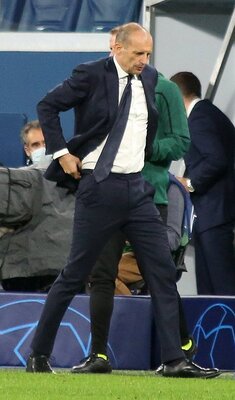
In addition to playing with such a young squad, Milan also faced numerous other difficulties in their pursuit of the title. Let’s look at each of them in detail and how Milan dealt with them.
Though Milan had finished as runners-up to Inter in the 2020-21 season, pre-season expectations ahead of the 2021-22 season pegged Inter and perennial favourites Juventus as the strongest contenders for the Scudetto. Inter had lost coach Antonio Conte in the summer and sold Romelu Lukaku and Ashraf Hakimi to balance their books, but were still considered to have more than enough to successfully defend their title. Juventus, after a 2-season dalliance with coaches they believed could bring the Old Lady’s football glamour as well as trophies, finally gave up and went back to Massimiliano Allegri, who had won 5 successive Scudettos for the Bianconeri. It was a very Juventus decision. As legendary Juventus chairman Giampiero Boniperti once said, “Winning isn’t important at Juventus, it’s the only thing that counts”.
In contrast to Inter and Juventus, Milan’s squad was far younger and light on stardust. Few serious observers expected a serious title tilt from them. In addition to their inexperience and relative lack of starpower, Milan also had to overcome many other potentially crippling setbacks throughout the course of the sapping 10-month season. These were:
1) SIMON KJAER’S INJURY IN DECEMBER
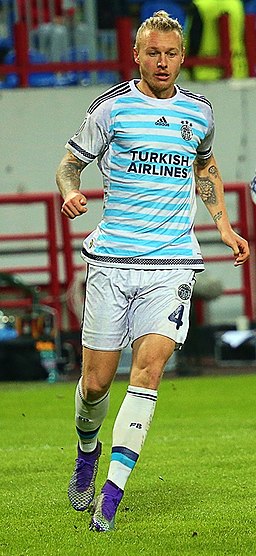
Long before getting international acclaim for his role in saving the life of Christian Eriksen during Euro 2020, Simon Kjaer was a promising young centre-back plying his trade in Sicilian Serie A club Palermo. The Dane was linked with a move to Milan as far back as 2009, when his composure on the pitch and reading of the game saw him emerge as a contender to succeed the great Alessandro Nesta as the cornerstone of the Milan defence. However, it was not to be. Kjaer then had an itinerant career, going to Germany, France, Turkey and Spain without really settling anywhere. In January 2020, he joined Milan from Sevilla on loan with an option to buy. The Dane immediately settled into the Milan first 11, displacing Argentine Mateo Musacchio as Alessio Romagnoli’s first-choice centre-back partner. Kjaer was also more comfortable than Musacchio was with a short passing game – which Milan coach Stefano Pioli prefers – and can launch attacks from the back.
Just as Kjaer had quickly established a partnership at the back with Milan captain Romagnoli soon after his arrival at the club, the arrival in January 2021 of Fikayo Tomori saw the Englishman on loan from Chelsea form an even stronger alliance with the Dane at centre-back. Tomori, whose pace and aggressiveness pleasantly surprised many Milan watchers, ousted Romagnoli from Milan’s starting 11.
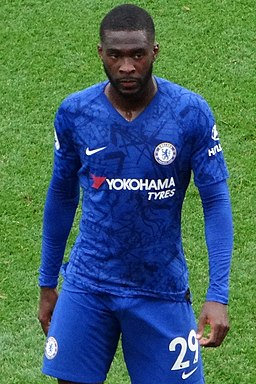
Kjaer and Tomori complemented each other. Tomori was the young go-getter, already in his fourth loan spell away from Chelsea and intent on proving his worth. Kjaer was the wise old head who had come back to Italy after 8 years of playing across the continent. In Kjaer and Tomori, the Rossoneri seemed to have finally found a centre-back pairing worthy of succeeding their last great back-two axis: Alessandro Nesta and Thiago Silva.
With Kjaer and Tomori marshalling the defence, Milan got off to a dream start in the 2021/22 Serie A season: after 12 matches, they had collected 32 out of a possible 36 points, level on points with Napoli but second on goal difference. Two match days later, disaster struck.
Three minutes into Milan’s away match against Genoa, the Denmark captain sustained an injury and had to be stretchered off. Later examinations revealed that Kjaer had ruptured the cruciate ligament in his left knee and would miss the rest of the season.
In the aftermath of Kjaer’s injury, Pioli spoke about the importance of the Dane to Milan. “Simon’s charisma, personality and ability to know what to say at the right moment is very important for the team,” Pioli said.
“Romagnoli has the right characteristics to play close to Tomori, nobody can deny Simon’s technical and moral values, so everyone will need to give something extra to replace him,” he told streaming service DAZN.
MILAN’S INJURY CRISIS
As Pioli had predicted, Romagnoli did step into the breach. But shortly after, the Milan captain and Tomori were both ruled out after contracting Covid-19. Tomori faced an additional month out, following knee surgery.
The top three centre-backs at Milan were now out of action for one reason or the other. It fell to two rookies, 21-year-old Pierre Kalulu and 22-year-old Mattia Gabbia, to shoulder the defensive burden.
Pierre Kalulu, a €480,000 signing from Olympique Lyonnais in 2020, has in particular been a revelation.
They did so gamely, helping Milan win 2 games out of 3 before Romagnoli returned to the team.
Kalulu, a €480,000 signing from Olympique Lyonnais in 2020, has in particular been a revelation.
The Frenchman, originally a right-back, was usually deployed as a full-back before this season. However, Milan’s injury crisis meant Kalulu partnered first Romagnoli and then Tomori in central defence when the Rossoneri needed him.
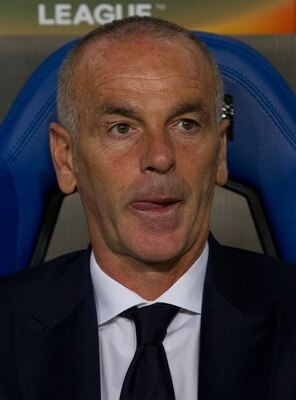
On March 6, Milan faced Napoli at the Stadio Diego Armando Maradona in Naples in a top of the table clash. Milan were still in second place trailing Napoli, level on points but behind on goal difference.
Romagnoli was ruled out of the clash due to an adductor problem and Kalulu joined Tomori in central defence. Milan won 1-0 and went top of the table.
The Rossoneri had 10 matches left to play. Kalulu started all of them, partnering Tomori at the back. They helped Milan let in just 3 goals in those 10 matches and wrapped up the Scudetto in their final match at Sassuolo.
Alessio Romagnoli never regained his spot in the first 11.
“(Kalulu’s) personality is incredible because he learns from his mistakes,” Pioli told streaming service DAZN after Milan’s 3-1 win over Roma in January.
“He is intelligent and quick and I am not surprised by his performance because I know him well.”
In March, Simon Kjaer spoke to Danish tabloid Ekstra Bladet about his rehabilitation from injury. “Everything is on track, the rehabilitation is going well, I am very happy and feel positive about the progress,” he said.
“I will soon enter the phase where the knee will allow me to do everything and that’s when I can start really improving physically. I don’t doubt for a second that I will come back stronger.”
When the elegant Dane does come back, he will face a fight for a place in the Milan starting 11.
2) THE WOEFUL FORM OF MILAN’S NUMBER 10
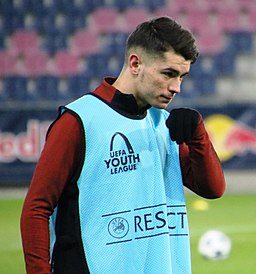
When Hakan Çalhanoğlu left Milan in the summer of 2021 on a free transfer to join city rivals Inter, the Rossoneri entrusted the Turk’s Number 10 jersey to 22-year-old Brahim Díaz. The Spaniard himself was returning to Milan on a 2-year-loan from Real Madrid after an encouraging loan spell with the Rossoneri during the 2020-21 season. “There was an opportunity (to take the Number 10 shirt), and I took it,” Díaz told La Gazzetta dello Sport. “It’s a Number 10 that brings leadership, but I’m not afraid of the pressure, it gives me energy.”
Milan’s Number 10 has been worn by greats of the game like Ruud Gullit, Clarence Seedorf and Gianni Rivera. Trying to measure up to its past can be daunting. In Pioli’s preferred formation of 4-2-3-1, the Number 10 has a crucial part to play as the central attacking midfielder behind the striker.
For a brief while this season, Díaz seemed to be taking to his new responsibility like a duck to water. In Milan’s first 8 matches of the 2021-22 season, the elfish Spaniard recorded 4 goals and 2 assists. “I feel really important, I’ve had a good start to the season, I expected it too,” Díaz told MilanTV in late September. “I know I’m a good player and I have confidence in myself. But it’s my teammates too, given how we’re approaching games and the way we’re playing. We’re really united.”
When Brahim Díaz returned to the playing field more than a month after contracting Covid-19, the spark of the early season had gone. He still ran hard, but his slight frame meant he easily got knocked off the ball by more physical players. He struggled to make inroads into opposition defences and his link-up play steadily deteriorated.
However, that was as good as it got for Díaz as shortly after that interview, he contracted Covid-19 and missed three matches.
When Díaz returned to the playing field more than a month later, the spark of the early season had gone. He still ran hard, but his slight frame meant he easily got knocked off the ball by more physical players. He struggled to make inroads into opposition defences and his link-up play steadily deteriorated. After recovering from Covid-19, Díaz played 30 more times this season in all competitions – 24 of them starts – but registered just 2 more assists and no goals.
One reason the Spaniard played so much despite such sterility in front of goal was a lack of real alternatives. Milan had not signed a like-for-like replacement for Díaz when he returned to the Rossoneri on loan. Junior Messias, signed from relegated Crotone, was a right-winger who could nominally play as a Number 10. However, the Brazilian was having trouble keeping his own place in the side, leave alone taking over the mantle of the Number 10. Zlatan Ibrahimović, who could have been a viable solution due to his vision and link-up play, was rarely fit during the season.
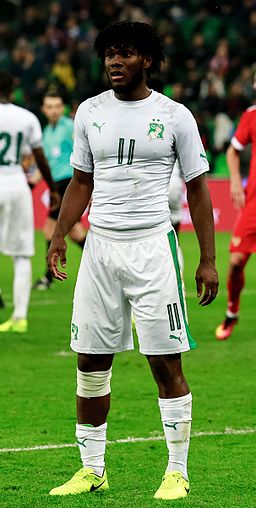
Finally Pioli was forced to play defensive midfielder Franck Kessié in Díaz’s role, with mixed results. Kessié, who had a solid if unspectacular season in his natural role at defensive midfield, brought much-needed physicality to the Number 10 role but didn’t have the technique to help his team unlock opposition defences.
Díaz’s offensive output dried up so much, and Milan’s left-wing combo of Theo Hernández and Rafael Leão was delivering so consistently, that Pioli realised in the last weeks of the season that the Rossoneri did not actually need a central attacking midfielder.
Díaz was dropped for Milan’s last three matches of the Serie A campaign, with squad player Rade Krunić, normally a defensive midfielder, taking up the Number 10 spot. “Many forget that Brahim is still young and that it was his first experience as a starter in a great team,” Pioli said in a post-season interview with Spanish newspaper AS. “He started off great, I agree, then the injuries and Covid took away his confidence, and maybe even some of my decisions. I’m sure , however, that he is a great player, with enormous qualities and very useful for the way we play. I would like him to stay.”
3) UNDERWHELMING SEASON FROM RIGHT-WINGERS
Milan have struggled to find goals on a consistent basis from their right wing over the past few seasons, in contrast to the left wing where they now have one of Europe’s most feared double-acts: Theo Hernández and Rafael Leão .
Samu Castillejo, bought for a princely €25 million from Villarreal in the summer of 2018, has been a flop and Milan have been trying to move him on for 2 years, but in vain.
Twenty-year-old Alexis Saelemaekers was signed from Belgian club RSC Anderlecht in 2020 and has impressed at Milan with his industry and never-say-die spirit. However, the Belgian does not have the gift of beating his man the way Leão does, and his crossing leaves much to be desired.
Thirty-year-old Messias, who once delivered refrigerators for a living before becoming a professional footballer, was signed in the summer of 2021 and expected to give Saelemaekers competition on the right wing.
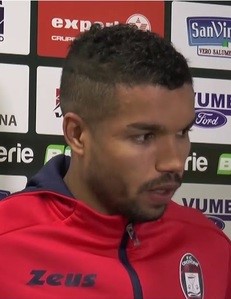
However, the Brazilian has been a disappointment, seemingly more intent on trying to win free-kicks for Milan by going to the ground easily rather than creating chances from open play. The ploy has not been successful, his productivity has suffered, and as a result, so have Milan.
The numbers bear out the stark contrast in quality between Milan’s left and right wings this season. While Hernández and Leão have combined to score or assist 32 goals in Serie A, Saelemaekers, Messias and right-back Davide Calabria have all combined to contribute only 8 goals and 8 assists this season.
In the aftermath of Milan’s Scudetto victory, the Rossoneri are already at work trying to find the right player to strengthen their right wing. Sassuolo’s Domenico Berardi and Club Brugge’s Noa Lang have been among the players most linked with a transfer to Milan.
4) ZLATAN IBRAHIMOVIC’S INJURY TROUBLES
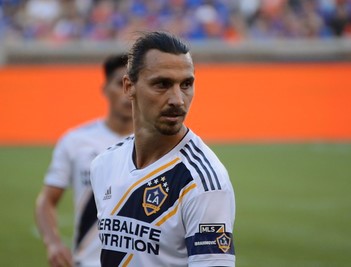
It’s hard to overstate the influence Ibrahimović has had on his Milan teammates since his arrival in January 2020. “At the beginning nobody ran in training,” the Swede told Il Corriere dello Sport about the atmosphere in the Milan camp when he joined them. “I faced them one by one, and not on the sidelines, (but) in front of the others: in training you have to kill yourself with work. If I run, if I kill myself, my partner will run and kill himself for me. Everyone understood it, except one. Leao didn’t pay attention to me at first. He got there on his own. In fact he has improved a lot.”
When Ibrahimović rocked up at Milanello, the training facility of AC Milan after joining on a 6-month contract, Milan were 11th in the Serie A table. Coach Marco Giampaolo had been sacked after 5 defeats in the Rossoneri’s first 9 league matches despite around €110 million being spent in the summer transfer window. Stefano Pioli had been brought in to try and salvage the season.
After Ibrahimović joined Milan in early January 2020 however, the difference in results was stark:
| No. of Matches | Points | Goals scored | |
| Before Zlatan* | 17 | 21 (out of 51) | 16 |
| After Zlatan | 21 | 46 (out of 63) | 47 |
* Ibrahimović joined Milan in early January 2022.
At the end of the 2019/20 season, the Rossoneri finished in sixth place and qualified for Europe. Ibrahimović scored 10 goals in 18 Serie A matches and assisted 5 goals.
The 2020/21 season saw a young Milan side led by Ibrahimović and Simon Kjaer challenge Inter for the title before the much-stronger Nerazzurri pulled away and romped to the title. Though ‘Thor’ – as Paul Pogba likes to call the giant Swede – was battling injuries, he still managed to score 15 goals in 19 Serie A matches.
Milan missed out on the 2020/21 title, but had qualified for the UEFA Champions League after 8 years.
Ibrahimović’s presence on the pitch was much-diminished in 2021-22, again owing to persistent injuries. He remained a crucial figure off the pitch however, giving his teammates a rousing speech at half-time on matchday 36 away at Hellas Verona with the score tied at 1-1.
“Everyone remembers the Milan players who won the Scudetto or the Champions League, so if we want to be remembered, we’ve got three games to do it,” said Ibrahimović. Shortly after half-time, Sandro Tonali scored to give Milan the lead and Alessandro Florenzi ensured the result with a third goal in the 86th minute.
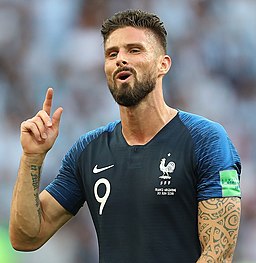
Though Ibrahimović’s influence inside the locker room remained formidable, Milan missed the Swede’s output on the pitch. Olivier Giroud always worked hard for the team both on and off the ball, but the goals almost dried up for the Rossoneri in the last stretch of the Scudetto race. In one stretch of matches between March and April, they scored only 3 goals in 5 league matches. It looked as if Milan’s failure to invest in a back-up striker in the January transfer window might cost them the Scudetto.
However, Milan’s newfound solidity at the back thanks to Pierre Kalulu and Fikayo Tomori meant they conceded only 3 goals in their last 11 league matches.
Milan’s defence had saved the day, but only just.
5) GLARING REFEREEING MISTAKES
Each season, all teams get their share of incredulous calls made by referees against them but Milan have a right to feel especially aggrieved on this count. The 2021/22 season saw an unusual number of bad decisions go against the Rossoneri, which cost them at least 8 points.
The first instance was during the 0-1 loss to Napoli at the San Siro in December, when Franck Kessie’s equalising goal in stoppage time was disallowed. The on-field referee had sanctioned the goal before a VAR check saw the referee overturn his decision, deeming that Olivier Giroud had interfered with play from an offside position, despite the French striker laying flat on the ground when the goal was scored.
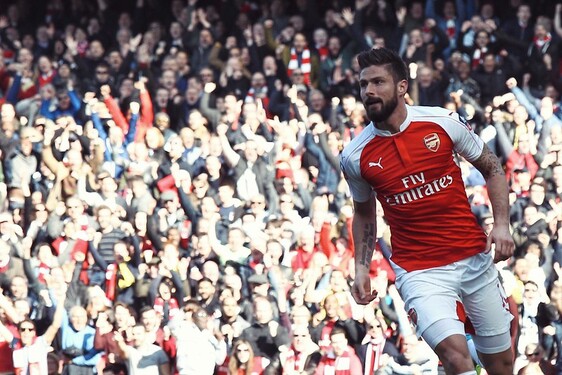
The second instance was even more controversial. When Milan hosted Spezia at the San Siro, 39-year-old referee Marco Serra blew the whistle during stoppage time for a foul that had been committed on Milan winger Ante Rebić. However, what Serra had failed to notice was that Milan had continued playing even as Rebić had gone to the ground. Serra failed to play the advantage and when Rossoneri winger Junior Messias equalised to make the score 1-1 seconds later, the goal was automatically disallowed.
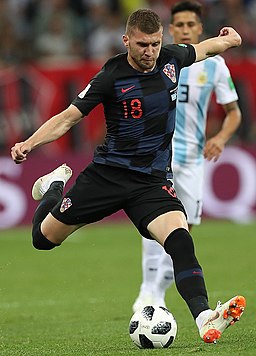
To rub salt into Milan’s wounds, Spezia mounted a lightning fast counter-attack and netted the winner deep in stoppage time. Milan lost 1-2. Referee Serra was reportedly in tears later and apologised to the Milan players, but the damage was done.
The third instance also took place at the San Siro, when Milan hosted Udinese. The Rossoneri were leading 1-0 through a Rafael Leão goal when, in the 66th minute, Udinese left-back Destiny Udogie seemed to bundle in a cross from the left with the help of his arm. The ball evaded Milan goalkeeper Mike Maignan and Udinese had equalised. Though replays showed Udogie seeming to handle the ball, the VAR referee did not intervene and Udinese held on for a 1-1 draw.
The successive refereeing blunders raised the ire of even Milan Technical Director Paolo Maldini. “VAR should remove the doubts, used this way it hurts because this isn’t the first time (Milan have been affected). It’s an obvious mistake, whoever decides must understand football. And I say another thing: Milan are in first place and cannot always have a rookie referee at San Siro. It’s not easy to referee at San Siro. Unfortunately, the referee made some mistakes.”
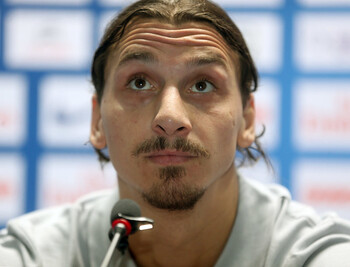
Days after Milan clinched their first Scudetto in 11 years at Sassuolo, Ibrahimović shared a message on his Instagram handle:
“For the past six months I played without an ACL in my left knee.
Swollen knee for six months.
I was only able to train with the team 10 times in the last six months.
Took more than 20 injections in six months.
Emptied the knee once a week for six months.
Painkillers every day for six months.
Barely slept for six months because of the pain.
Never suffered so much on and off the pitch.
I made something impossible to something possible.
In my mind I had only one objective, to make my teammates and coach champions of Italy because I made them a promise.
Today I have a new ACL and another trophy.“
If a triumphant 2021/22 season would have taught the Milan players anything, it is that success demands sacrifice and often, the ability to endure pain. After the manifold obstacles this young Milan team overcame to win the club’s first title in 11 years, they will be more confident in themselves and wiser for the experience. It would be hard to guess if they will build on this success, but they have the tools to do so.
